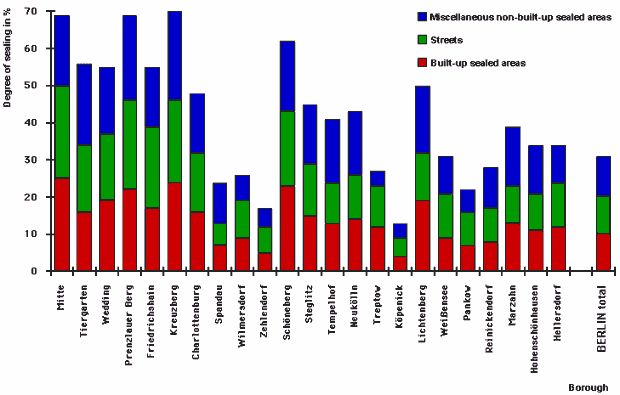Description by Land Use Categories
The highest degrees of sealing occur in old residential areas within the city rail circle line. Residential blocks constructed with mostly closed courtyards have a sealing degree of over 90%. But large industrial and small business areas are also strongly sealed, especially areas along the Spree River from Spandau to Köpenick used industrially for a long time, and the large industrial areas in the Lichtenberg, Marzahn and Hohenschönhausen boroughs, which are over 90% sealed.
Taken as a whole, the degree of sealing generally decreases from the inner city towards the edge of the city. This corresponds to the fact that development is looser at the edge of the city. The city edge is either completely undeveloped (forest, agriculture) or contains areas of single-family homes. Exceptions are conspicuous. The matured development of cities independent until 1920, like Spandau and Köpenick, have a sealing degree around 60%. Their core areas are over 90% sealed. The large new high-rise housing blocks at the city’s edges, like Marzahn, Hellersdorf, Hohenschönhausen, Gropiusstadt in Rudow, and “Thermometersiedlung” in Lichterfelde have a sealing degree from 50-80%.

